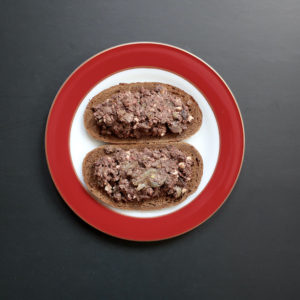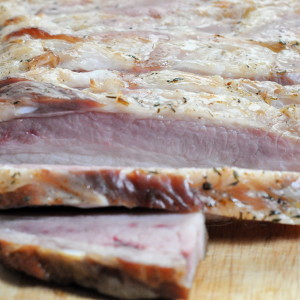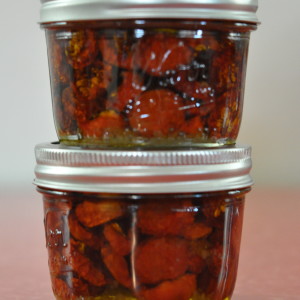Bagels
[Editor’s note, 11/24/21: This post was written before Boichik Bagels came to town. It is now possible to procure a decent bagel in Northern California. Corned beef? Not so much. But we no longer need to make bagels at home.]
I know what you’re thinking. Bagels? At home? What for?

I won’t mince words: because they’re terrible here. Here being California.
Granted, bagels may be wonderful where you live. I grew up in suburban Detroit, where the bagels were indeed wonderful. Knowing no differently, I took this for granted. This changed in 1985, when I moved to Los Angeles, where my teenaged tastebuds were subjected to the California bagel: tasteless, puffy, oversized.
California bagels lack the crisp outer shell that makes a bagel a bagel. Adding insult to injury, California confuses bagels with muffins, offering them in a wide variety of flavors, including blueberry (!) and chocolate (!!).

Chocolate where it belongs.
At a time when words like “authentic’ and “appropriation” are buckling beneath the weight of their connotations, let me say such flavors are travesties. A bagel is not a muffin. It is not a dessert. A bagel is a savory vehicle for cream cheese, topped by as much lox as you can afford. As such, a true bagel is offered in a limited number of flavors: plain, salt, onion, egg, or everything, meaning poppy seeds.
True bagels have crisp, shiny exteriors–this from their dip in hot malted water before their bake–and chewy interiors. They stale rapidly, turning to rock in 24 hours.
If you think I exaggerate, you have never tasted a real bagel–one from Detroit or New York.

The Montreal bagel is another animal entirely. The IK is sticking to bagel bagels, which don’t seem to have any special name to distinguish them from Montreal bagels.
—
It is only fair to admit that the bagels emerging from the IK kitchen do not compare to the bagels of her youth. Not for nothing is this blog called “The Insufficient Kitchen.”
Nevertheless, the IK–and Mr. IK–have determined these bagels post-worthy.
A few points:

Bagels are consdered a faff, as the English say, because they must be boiled before they are baked. While I wouldn’t suggest bagel baking if you have a plane to catch (especially if you booked with Thomas Cook) they aren’t the production you might think.

About portioning and forming….
Your bagels can be the size of those godawful miniature jobs that come a dozen to a bag. Or you may make them larger.
For smaller bagels, cut your risen dough into approximately 1 ounce/ 28 gram pieces. For larger bagels (see photo), portion the dough into pieces weighing about 2.6 ounces, or 75 grams. A scale that toggles between imperial and metric is useful here, or you can eyeball it. The bagel police won’t be stopping by.

For those of us who are less than dextrous, Claudia Roden offers an ideal shaping method: roll the dough into balls. Poke a hole in the middle, and gently tug the dough apart, so the hole widens. This ensures your bagel won’t come apart while boiling.

When it’s time to boil the bagels, attain your shiny crust by adding two tablespoons of malt syrup to a large pot of boiling water. Before you freak out–what in hell is malt syrup and where do I find it?– know this product is easily located in your supermarket baking aisle. It’s not? Honey, molasses, or Lyle’s Golden Syrup all work. And yes, you can just boil the bagels in plain water, but hey, you’ve gotten this far.

If you do nothing else, grease your baking trays lavishly. Use baking spray, vegetable oil, butter, or margarine. It doesn’t matter. Just use lots of it. A few weeks ago, I got lazy with a batch of bagels. Reader, those bagels were gorgeous, my prettiest yet. And they were glued to that tray. For all I know, they still are. This after trying every trick on the net–turning the tray upside down, banging it, scraping with a spatula, lighting sage smudges, chanting (okay, cursing loudly).

One beautiful, stuck bagel.
If you are the sort whose teeth can handle seeds, by all means add some to your bagels. I wanted to make onion bagels, but what with taking pictures, onion frying got away from me.

I did manage a shot of the intended onion. It was a nice onion.

Readers of a certain age may recall banging bagels against cafeteria tables in time to Queen’s “We Will Rock You”; this in protest of staleness. I am not suggesting you try this. Instead, freeze any bagels you do not consume within a day or two. These days we have far worse problems to shout about.
Bagels
Adapted from Joan Nathan’s Jewish Cooking In America and
Claudia Roden’s Book Of Jewish Food
Please read through the entire recipe before baking.
Yield: 11-16 bagels, depending on size
Total preparation time: about one hour of hands-on work, another hour for dough to rise, and 20-25 minutes baking time.
Ingredients:
Rather than write “see notes” after every ingredient, just read the notes, okay?
3/1/4-4 cups/440-545g bread flour
1 heaping tablespoon yeast
2 teaspoons-2 tablespoons sugar
1 1/2 cups/355 ml warm water
2 teaspoons regular or fine sea salt
1 tablespoon neutral vegetable oil, plus a little more for the bowl
2 tablespoons malt syrup, for boiling the bagels
Optional:
poppy seeds
fried onion
sea salt crystals
Instructions
This recipe requires four baking trays. If you don’t have that many, it’s fine–there’s ample time to wash up and ready them between steps.
Heat the water in a microwave for ten seconds. If you don’t have a microwave, use a small pot. You want the water just warm, not boiling. Tip in the yeast and a teaspoon of sugar. Allow it to foam for at least three minutes. If the yeast doesn’t get foamy, one of three things is wrong: the water is too cold, too hot, or the yeast is dead.
While the yeast is doing its thing, pour half the flour–about 1and 1/2 cups–into your largest bowl. Add the salt, remaining sugar, if using, and the vegetable oil.
Now pour the yeasty water into the bowl. Add the remaining flour. Stir with a wooden spoon or knead with one hand (my preference) until a shaggy dough forms.
Tip the entire mess onto a clean countertop and knead until the dough comes together. You may need to add more flour. I always need to add quite a bit–it’s very damp in my corner of the Bay Area.
Once you have a smooth dough that isn’t sticking to your hands or the counter, lightly oil a large bowl-4 quarts/liters, put the dough in it, cover it, and leave it to rise in a warm spot. You want the dough to double in size. Unless your kitchen is an icebox, this should take about an hour.
If you want onion bagels, now is the time to slice and gently fry an onion. Don’t get it get too dark, lest it burn while baking.
While the dough rises, get ready to shape and boil the bagels:
Lightly oil two large baking trays.
Fill a large saucepan with about four quarts/liters of water. Have the malt syrup to hand.
Once the bagels come out of the boiling water, they’ll need to dry briefly. I find placing a cooling rack over a large piece of baking paper-either wax or parchment–saves cleanup. And the paper recycles. Place these near your pot of soon-to-be-boiling water.
Just before you reach the hour dough-rising point, turn your oven to 450F/230C.
Punch down the dough and knead it a few seconds. Place it on the counter and portion it using a sharp knife or dough scraper. If you want smaller bagels, portion the dough into 16 pieces. If you want larger bagels, go for 11-13 pieces. (See post for an in-depth discussing of portioning and shaping bagels.)
Turn the heat on under the pot. When the water boils, turn it down. You want it just under boiling. Add the malt syrup,
Now roll your dough into balls and poke a hole in the middle of each piece. Pull apart gently to widen the hole.
Set each bagel on an oiled tray while you form the others, allowing ample space between each one, as they will continue to rise. If you notice the holes closing up, simply widen them with your fingers.
Using a slotted spatula, spider, or a Chinese-style strainer with a bamboo handle (ideal here), carefully lower two or three bagels into the hot water. I do two at a time. I find they rise to the surface immediately, so I hold them under the water with the strainer bowl for about 30 seconds, flip them, repeat, and remove them to the cooling rack.
If you are adding onions or any kind of seeds, now is the time: either sprinkle them over the bagels or roll them in whatever it is very gently.
Lavishly butter, oil, or spray two baking trays. I do not have silicon baking mats, so cannot advise on whether they would work here. Channel your inner Julia.
Using your fingers or a spatula, gently move the bagels from their cooling rack to the baking trays. I always need two baking trays.
It’s fine to bake the bagels using two trays at a time, using the upper and middle racks of the oven.
Baking takes 20-25 minutes; if you prefer a lighter bagel, turn them at the ten minute mark, as the underside tends to get very brown. I like a darker bake, so leave them.
Bagels are done when lightly browned on top; they will look and smell done. Remove from oven and place on cooling rack. If they stick to the baking sheet, allow to cool and they’ll come off.
Eat with cream cheese and smoked salmon. (Do you have to ask?)
If you have a trust fund, smoked sable (the fish, not the fur) is magnificent. Please invite me.
These bagels are good keepers in the refrigerator up to three days, after that, freeze them up the three months.
Notes:
If you are cooking in Europe, bread flour is strong flour; I mistakenly used all-purpose flour the first few times I baked these, and they turned out fine, so if you don’t have bread flour in the house, don’t feel you must run out and buy a bag.
Nathan’s recipe calls for regular yeast; Roden’s calls for fast-acting. Both require rising times of at least an hour. I used regular yeast.
Nathan’s recipe uses two tablespoons of sugar: one teaspoon feeds the yeast, the rest is mixed into the dough. I prefer less sugar. Suit your taste.
I used canola oil. Any flavorless oil will work.
Malt syrup is sold in the baking aisle of larger supermarkets. If you are unable to find it, honey, molasses, or Lyle’s Golden Syrup make good substitutes. Plain boiling water will also do, but the bagels won’t have a nice shiny crust.
After shaping the bagels, Nathan adds cornmeal to the oiled baking sheet. It’s a nice addition.
The original vinyl. Bought in 1978 at Korvettes Department Store.





